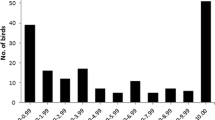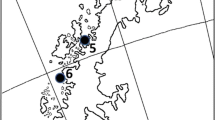Abstract
Immunoecology deals with the questions about how immune defences have evolved and are being used and optimized in different environments, ecological settings and lineages. In such research, often only single time point measures and small sample volumes are available, which limits the applicability of traditional immunological methods. Methodological progress in the field thus largely depends on the development and validation of immune assays suitable for ecological studies. Here we validate and apply a novel, Pholasin-based chemiluminescence method for assessment of oxidative burst in the whole blood samples of birds. This assay measures an inducible component of innate immunity by quantifying the immediate extracellular oxidative burst of stimulated phagocytes. The assay procedure is simple, measurement precision is satisfactory and the measurement time is only 6 min. It can be performed on 20 μL (or smaller) blood samples that can be preserved for a few days. Blood of six studied passerine species produced chemiluminescence response to stimulation with bacterial lipopolysaccharide (LPS) in vitro. The magnitude of the response depended on the concentration and origin of the LPS. Parameters of this response depended on biological factors such as age of birds and in vivo priming with different antigens such LPS and Brucella abortus antigen suspension. Different parameters of the chemiluminescence response were significantly repeatable over 6-day period. All these properties argue for a great potential applicability of this method in immunoecological research.







Similar content being viewed by others
References
Amat JA, Aguilera E, Visser HG (2006) Energetic and developmental costs of mounting an immune response in greenfinches (Carduelis chloris). Ecol Res 22:282–287
Bertrand S, Criscuolo F, Faivre B, Sorci G (2006) Immune activation increases susceptibility to oxidative tissue damage in zebra finches. Funct Ecol 20:1022–1027
Campbell TW, Ellis C (2007) Avian and exotic animal hematology and cytology, 3rd edn. Blackwell, Oxford
Chadfield M, Olsen J (2001) Determination of the oxidative burst chemiluminescent response of avian and murine-derived macrophages versus corresponding cell lines in relation to stimulation with Salmonella serotypes. Vet Immunol Immunopathol 80:289–308
El-Benna J, Dang PMC, Gougerot-Pocidalo MA (2008) Priming of the neutrophil NADPH oxidase activation: role of p47phox phosphorylation and NOX2 mobilization to the plasma membrane. Semin Immunopathol 30:279–289
Farnell MB, Crippen TL, He H, Swaggerty CL, Kogut MH (2003) Oxidative burst mediated by toll like receptors (TLR) and CD14 on avian heterophils stimulated with bacterial toll agonists. Dev Comp Immunol 27:423–429
Freitas M, Lima J, Fernandes E (2009a) Optical probes for detection and quantification of neutrophils’ oxidative burst. A review. Anal Chim Acta 649:8–23
Freitas M, Porto G, Lima J, Fernandes E (2009b) Optimization of experimental settings for the analysis of human neutrophils oxidative burst in vitro. Talanta 78:1476–1483
Gerilechaogetu, Hanieh H, Abe A, Kondo Y (2009) Extracellular signal-regulated kinase (ERK) activation in chicken heterophils stimulated with phorbol 12-myristate 13-acetate (PMA), formyl-methionylleucyl-phenylalanine (fMLP) and lipopolysaccharide (LPS). Anim Sci J 80:577–584
Harmon BG (1998) Avian heterophils in inflammation and disease resistance. Poult Sci 77:972–977
Hasselquist D (2007) Comparative immunoecology in birds: hypotheses and tests. J Ornithol 148:571–582
He H, Genovese KJ, Swaggerty CL, Nisbet DJ, Kogut MH (2007) In vivo priming heterophil innate immune functions and increasing resistance to Salmonella enteritidis infection in neonatal chickens by immune stimulatory CpG oligodeoxynucleotides. Vet Immunol Immunopathol 117:275–283
Hirschfeld M, Ma Y, Weis JH, Vogel SN, Weis JJ (2000) Cutting edge: repurification of lipopolysaccharide eliminates signaling through both human and murine Toll-like receptor 2. J Immunol 165:618–622
Kielland A, Blom T, Nandakumar KS, Holmdahl R, Blomhoff R, Carlsen H (2009) In vivo imaging of reactive oxygen and nitrogen species in inflammation using the luminescent probe L-012. Free Radic Biol Med 47:760–766
Klasing KC (2004) The cost of immunity. Acta Zool Sin 50:961–969
Klasing KC, Leshchinsky TV, Adams N, Slotow R (1999) Functions, costs, and benefits of the immune system during development. In: Proceedings 22nd international ornithological congress, Durban. University of Natal, Durban, pp 2817–2835
Kogut MH, McGruder ED, Hargis BM, Corrier DE, Deloach JR (1995) In-vivo activation of heterophil function in chickens following injection with Salmonella enteritidis-immune lymphokines. J Leukoc Biol 57:56–62
Kogut MH, Holtzapple C, Lowry VK, Genovese K, Stanker LH (1998) Functional responses of neonatal chicken and turkey heterophils following stimulation by inflammatory agonists. Am J Vet Res 59:1404–1408
Kogut MH, Genovese KJ, Stanker LH (1999) Effect of induced molting on heterophil function in white leghorn hens. Avian Dis 43:538–548
Lee KA (2006) Linking immune defenses and life history at the levels of the individual and the species. Integr Comp Biol 46:1000–1015
Lessells CM, Boag PT (1987) Unrepeatable repeatabilities: a common mistake. Auk 104:116–121
Lochmiller RL, Deerenberg C (2000) Trade-offs in evolutionary immunology: just what is the cost of immunity? Oikos 88:87–98
Matson KD, Ricklefs RE, Klasing KC (2005) A hemolysis–hemagglutination assay for characterizing constitutive innate humoral immunity in wild and domestic birds. Dev Comp Immunol 29:275–286
Mcgraw KJ, Cohen AA, Costantini D, Hõrak P (2010) The ecological significance of antioxidants and oxidative stress: a marriage between mechanistic and functional perspectives. Funct Ecol 24:947–949
McReynolds JL, Genovese KJ, He H, Swaggerty CL, Byrd JA, Ricke SC, Nisbet DJ, Kogut MH (2009) Alfalfa as a nutritive modulator in maintaining the innate immune response during the molting process. J Appl Poult Res 18:410–417
Millet S, Bennett J, Lee KA, Hau M, Klasing KC (2007) Quantifying and comparing constitutive immunity across avian species. Dev Comp Immunol 31:188–201
Monaghan P, Metcalfe NB, Torres R (2009) Oxidative stress as a mediator of life history trade-offs: mechanisms, measurements and interpretation. Ecol Lett 12:75–92
Norris K, Evans M (2000) Ecological immunology: life history trade-offs and immune defense in birds. Behav Ecol 11:19–26
Olsson M, Wilson M, Isaksson C, Uller T (2009) Polymorphic ROS scavenging revealed by CCCP in a lizard. Naturwissenschaften 96:845–849
Ottenweller JE, Natelson BH, Gause WC, Carroll KK, Beldowicz D, Zhou XD, LaManca JJ (1998) Mouse running activity is lowered by Brucella abortus treatment: a potential model to study chronic fatigue. Physiol Behav 63:795–801
Papp Z, Smits JEG (2007) Validation and novel applications of the whole-blood chemiluminescence assay of innate immune function in wild vertebrates and domestic chickens. J Wildl Dis 43:623–634
Papp Z, Dahiya JP, Warren T, Widyaratne G, Drew MD, Smits JEG (2009) Whole blood chemiluminescence response in broiler chickens on different experimental diets and challenged with Clostridium perfringens. Br Poult Sci 50:57–65
Rider SA, Davies SJ, Jha AN, Fisher AA, Knight J, Sweetman JW (2009) Supra-nutritional dietary intake of selenite and selenium yeast in normal and stressed rainbow trout (Oncorhynchus mykiss): implications on selenium status and health responses. Aquaculture 295:282–291
Sadd BM, Schmid-Hempel P (2009) Principles of ecological immunology. Evol Appl 2:113–121
Sarv T, Hõrak P (2009) Phytohaemagglutinin injection has a long-lasting effect on immune cells. J Avian Biol 40:569–571
Schulenburg H, Kurtz J, Moret Y, Siva-Jothy MT (2009) Introduction. Ecological immunology. Philosophical Transactions of the Royal Society B: Biological Sciences 364:3–14
Sepp T, Sild E, Hõrak P (2010) Hematological condition indexes in greenfinches: effects of captivity and diurnal variation. Physiol Biochem Zool 83:276–282
Sheldon BC, Verhulst S (1996) Ecological immunology: costly parasite defences and trade-offs in evolutionary ecology. Trends Ecol Evol 11:317–321
Sild E, Hõrak P (2009) Nitric oxide production: an easily measurable condition index for vertebrates. Behav Ecol Sociobiol 63:959–966
Walrand S, Farges MC, Dehaese O, Cardinault N, Minet-Quinard R, Grolier P, Bouteloup-Demange C, Ribalta J, Winklhofer-Roob BM, Rock E, Vasson MP (2005) In vivo and in vitro evidences that carotenoids could modulate the neutrophil respiratory burst during dietary manipulation. Eur J Nutr 44:114–120
Zwerdling A, Delpino MV, Pasquevich KA, Barrionuevo P, Cassataro J, Samartino CG, Giambartolomei GH (2009) Brucella abortus activates human neutrophils. Microbes Infect 11:689–697
Acknowledgements
We thank Tuul Sepp, Ulvi Karu, Marju Männiste, Richard Meitern, Jolanta Vrublevska and Martin Pent for the help with blood sampling and analysing and bird maintenance. Tuul Sepp kindly measured leukocyte concentrations. Discussions with Jan Knight greatly helped us to understand and adjust the Pholasin assay. Two anonymous reviewers provided constructive criticism on the manuscript. The study was financed by Estonian Science Foundation (grant # 7737 to PH), the Estonian Ministry of Education and Science (target-financing project # 0180004s09) and by the European Union through the European Regional Development Fund (Centre of Excellence FIBIR).
Author information
Authors and Affiliations
Corresponding author
Additional information
Communicated by J. Graves
Rights and permissions
About this article
Cite this article
Sild, E., Hõrak, P. Assessment of oxidative burst in avian whole blood samples: validation and application of a chemiluminescence method based on Pholasin. Behav Ecol Sociobiol 64, 2065–2076 (2010). https://doi.org/10.1007/s00265-010-1076-z
Received:
Revised:
Accepted:
Published:
Issue Date:
DOI: https://doi.org/10.1007/s00265-010-1076-z




